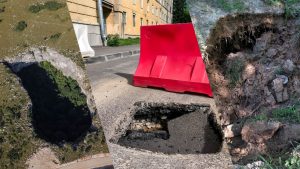Work orders are a standard part of any company in asset-centric industries. A work order is generally submitted to the respective team whenever a formal repair or maintenance needs to be done. This document would include all the information regarding the asset and describe the anomaly, detailing its nature. It would also have information on who is assigned to repair it, the authorised personnel, the expected deliverables, special instructions, and expected results. This blog will explain why work order management benefits asset managers.
A Work Order is Not SImply a Work Request
A work request can be submitted by anyone, not requiring the person filling the form to be part of the maintenance staff. Hence, a work request informs the maintenance team that an asset has broken down, for instance. The work request is reviewed by a maintenance manager who would add more technical details, specifying what needs to be done, scheduling the task and assigning it to someone in the maintenance team. It is this document, comprehensively updated and provided, that is known as a work order.
Why Are Work Orders Necessary?

As assets need to be repaired and maintained constantly, work order management requires a request for maintenance to be processed and completed in a timely manner. Such work orders must be executed on time to minimise asset downtimes. Traditionally, the work order was a form which people needed to submit physically. This physical documentation, which made it hard for the maintenance staff to read through bad handwriting and keep track of all materials, proved inefficient and time-consuming. Teams later started moving onto an advanced spreadsheet-based work order. This, however, is not ideal as such a platform only allows one technician to modify it at a time and requires the spreadsheet at the end to be printed, thereby not being much of a difference from the traditional work order applications. Today, the most effective way to manage work orders is through a Computerised Maintenance Management System (CMMS). On the other hand, some companies may invest in an Enterprise Asset Management (EAM)system.
What is the Difference Between a CMMS and EAM System?

How Does Work Order Software Solutions Help With Asset Management?

Multiple forms of the work order can be submitted, each of which helps to ensure assets are managed, repaired and maintained. Here are five ways:
A General Work Order
Assets that are not necessarily either installed may require a general work order. This would be to specifically set up the equipment and successfully implement it into business operations. General work orders could also include situations where a work order is requested to remove equipment as it no longer serves its function. Other types of work orders included in this type include painting, polishing, and other simple roles.
Preventive Maintenance Work Order
As the term suggests, this form of work order focuses on routine maintenance scheduled to prevent an anomaly from worsening, subsequently leading to a complete breakdown. As a result, costly equipment failure and random downtime can be completely eliminated. Preventive maintenance, therefore, uses predictive and prescriptive data analytics, which monitors assets in real-time and notifies the manager of an impending asset breakdown.
Inspection Work Order
An inspection work order requires a technician to conduct an audit or further inspection. The technician will identify the problem and create a work order to address the problem. On the other hand, depending on the solution implemented, the system will carry out the root causes analysis automatically, thereby not requiring anyone to do further inspection but focusing on how the problem will be solved.
Emergency Work Orders
Companies that do not have futuristic technology may face unplanned asset breakdowns requiring emergency work orders. An emergency work order is a reactive form of maintenance, requiring the technician to identify why the asset broke downs, fix it, record what maintenance was carried out and even specify how similar future breakdowns can be prevented. This form of work order is extremely common in asset-centric countries, heightening the lack of integration with advanced technologies.
Corrective Maintenance Work Orders
Unlike the previous forms of work orders, which would be a natural result of a work request submitted by a normal employee, correct maintenance work orders are typically submitted by technicians themselves. This is because, corrective maintenance work orders include situations where anomalies are detected while doing any of the maintenance types mentioned above. Hence, this would include repairs, restoration or replacement of equipment in a scheduled time.
Get Ahead of Your Work Order Management Responsibilities
With the multiple assets you are in charge of, trying to track and monitor all of them can be hectic. To make it easier, the work today has progressed to include proactive maintenance strategies so that companies no longer have to spend exorbitant amounts for asset repairs while facing losses where the company concerned is a business. In the utility sector, the number of work orders that would be coming in would not be limited to a building but requests to carry out maintenance on a city-wide scale. Optimise your work order management with a robust asset management system that allows you to control and take charge of asset maintenance.







